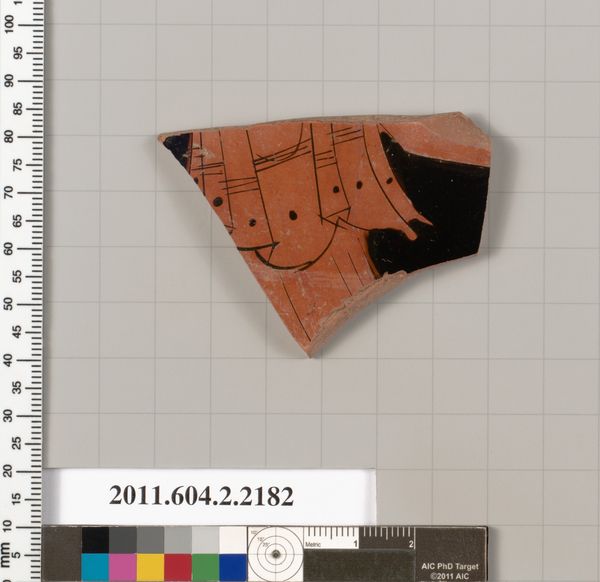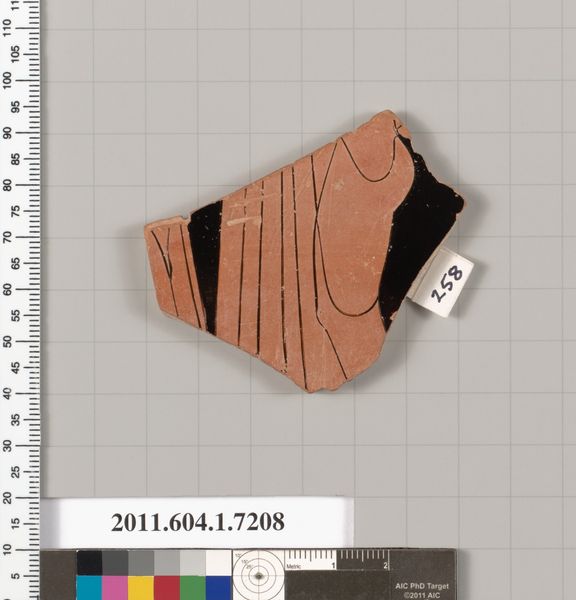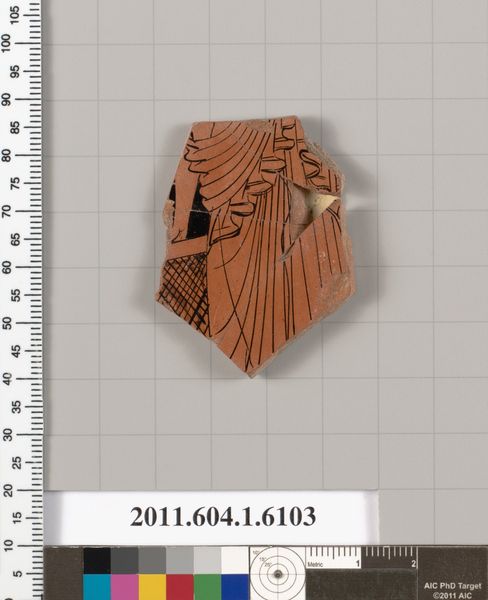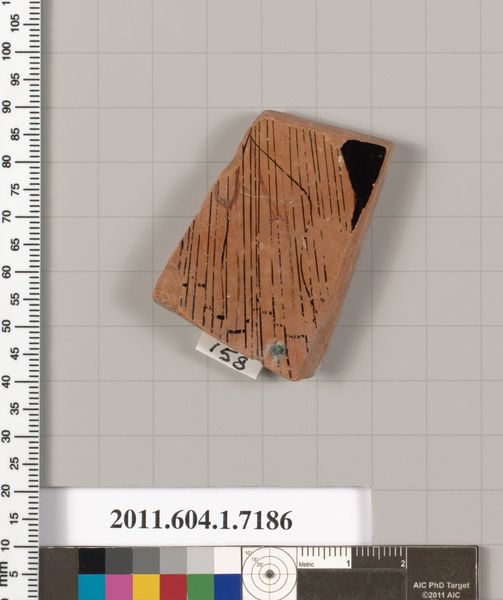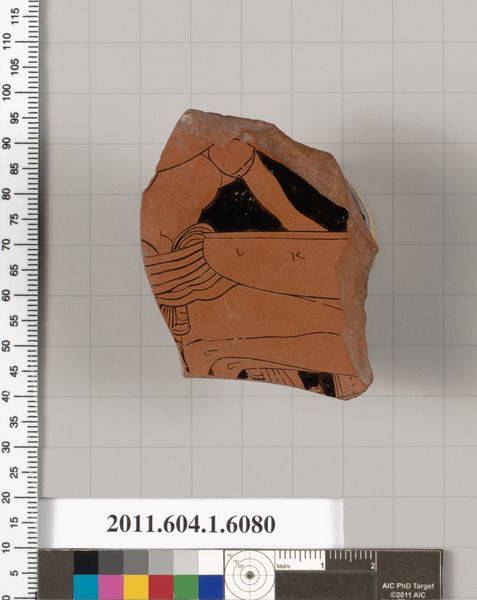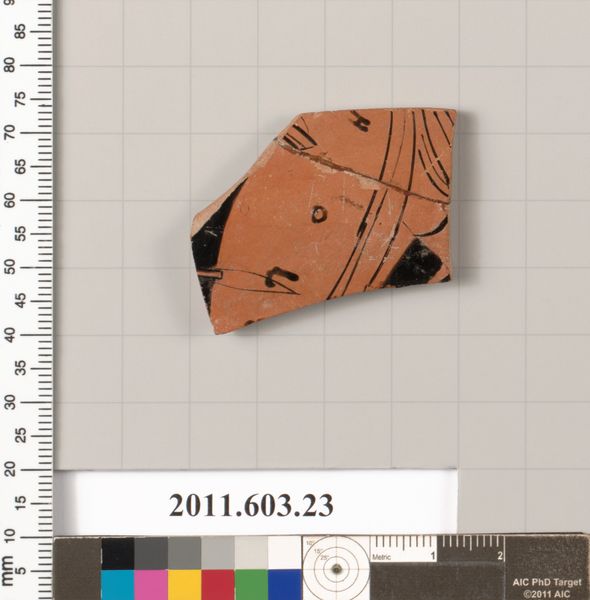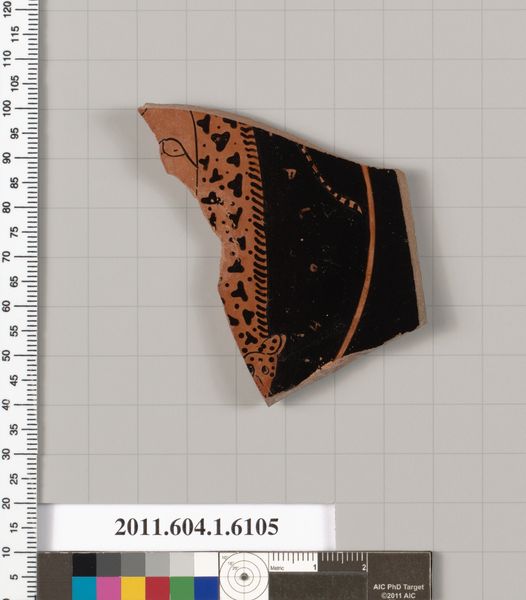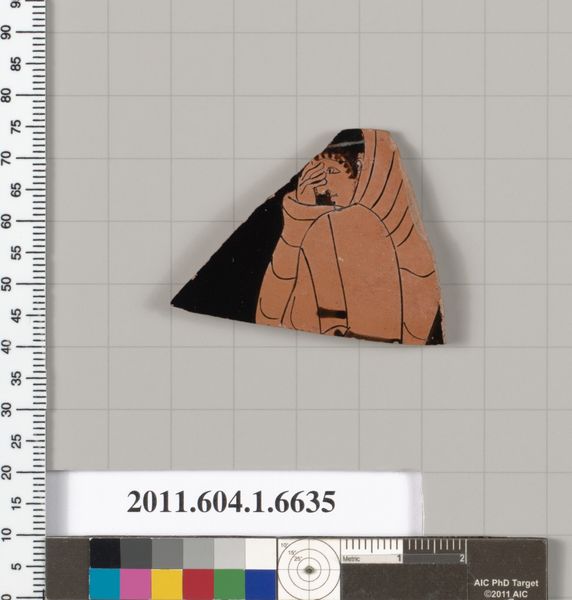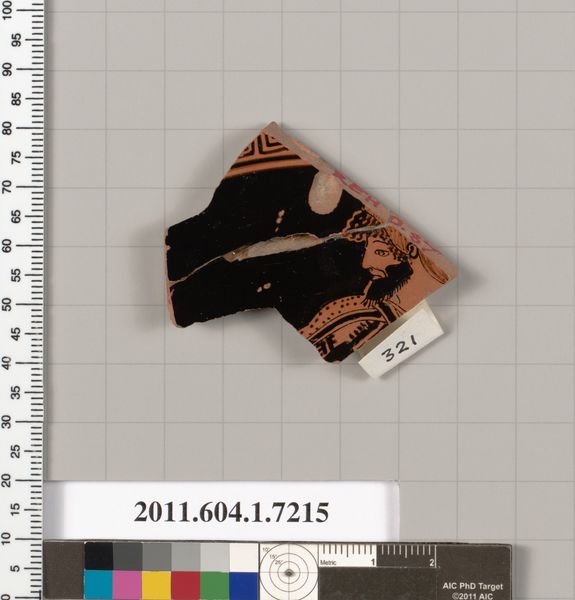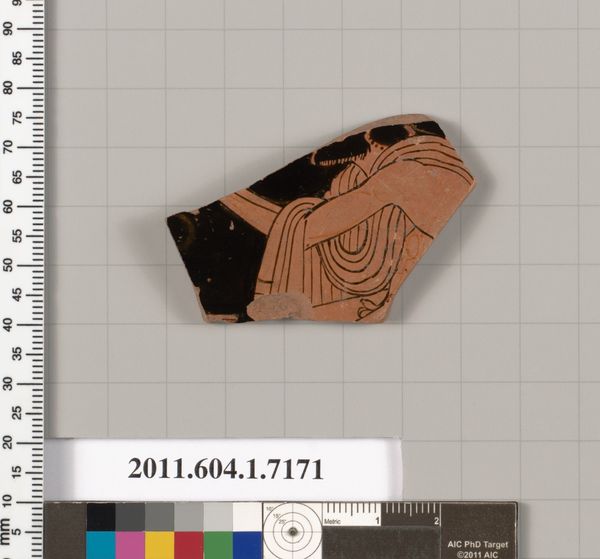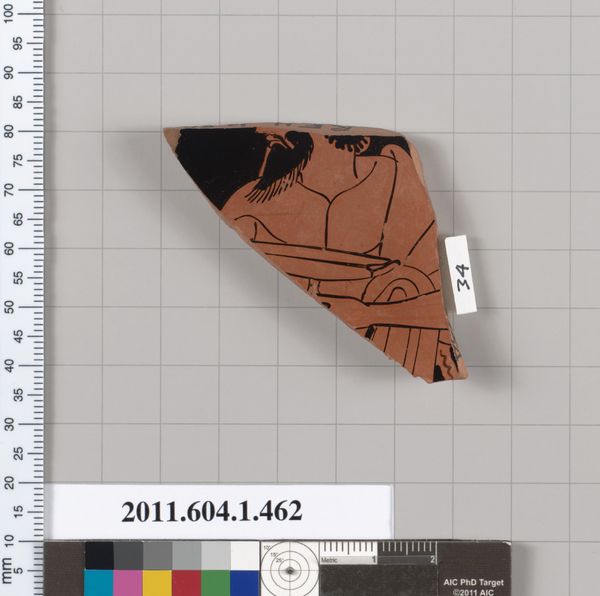
drawing, ceramic
#
drawing
#
greek-and-roman-art
#
ceramic
#
figuration
#
ancient-mediterranean
#
line
Copyright: Public Domain
Curator: Let’s turn our attention to this fragment, dating back to approximately 530 BC. It’s a piece of a terracotta kylix, a drinking cup, attributed to Epiktetos, and currently held in the Metropolitan Museum of Art. Editor: Immediately, I'm drawn to the starkness. The contrast is incredible. It’s just black on this reddish clay... there is an interesting quality about it - and yet those lines manage to suggest so much about the figure. It almost feels modern in its simplicity. Curator: That's a perceptive observation. This piece exemplifies the red-figure pottery style that was emerging in Athens at the time. By painting the background black and leaving the figures in the natural red of the clay, artists achieved finer details than in earlier black-figure techniques. And Epiktetos, although the work is only attributed to him, was a pioneer in this style. Editor: So this wasn’t just decorative, it was cutting edge tech of its time. I love thinking of ancient art in this way; its really part of technological history in a way. You can also really see the careful intention and skill in the line work even in a small piece such as this; can you image drinking from such an incredible creation? Curator: Absolutely. Kylixes were not merely functional objects but also statements of wealth, culture, and sophistication. Scenes from mythology, athletic contests, or everyday life would often grace them, making them ideal vehicles for expressing Athenian identity. This piece reflects that intersection between art and society and their place in ancient rituals and life. Editor: I find myself wondering what scene this tiny shard comes from. A symposium perhaps? Or is that wishful thinking after all of this talk of wine. I imagine some kind of drama unfolding at that table... whatever it was that cup had a front row seat. Curator: Indeed. The fragmentary nature of this kylix forces us to become active participants, piecing together the narrative. This is really why they fascinate me so much and speak to larger societal aspects. Editor: What a stunning reminder that beauty, even in broken pieces, tells a timeless story. Curator: A fitting summation and one that reminds us to re-evaluate our contemporary views and consider our predecessors as well.
Comments
No comments
Be the first to comment and join the conversation on the ultimate creative platform.
